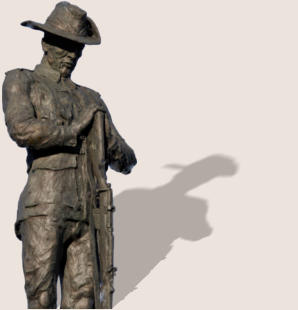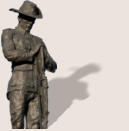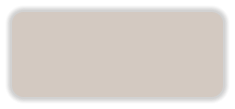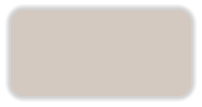Their bodies are buried in peace; but their names liveth for evermore.
Their Duty Done
A tribute to the men and women of the East Gippsland Region who Died
as a result of their participation in World War One : 1914 -1919


1124 Private James Henry Coughlan - Omeo Plains
Died of Wounds 1 August 1917
When James Coughlan was sent home in September 1915 after being injured it appeared
that he had been on a great adventure, and while injured, he had escaped the horrors of
war with his life but it was this injury that took his life two years later.
John and Sarah Coughlan lived on the Omeo Plains with their seven children. It
was here that the children attended school at Hinnomunjie. James was the only one of
the children to be born in Carlton as by the following year they had settled in
Hinnomunjie. They were well known in the community as John was a councillor, and at
one-time Shire President, with the Shire of Omeo. When James left school he worked on
the family farm and trained in engineering at Fitzroy. He was a member of the Benambra
Rifle Club for three years and in other areas for four years.
It was on a visit home from Fitzroy that James, when 25 years old, was one of the
first from the district to enlist, doing so on 17 September 1914. The Shire President,
James Braid overseeing proceedings, and after being farewelled from the district, James
attended training before embarking on the Themistocles on 22 December. Attached to
the 6
th
Battalion C Company he spent time in training camps in Egypt and wrote many
letters home. In April 1915 he wrote:
After parade the other day we went up to a cave we had discovered on the hill not
far from the camp. It proved to be a fairly extensive cavity or number of rooms cut out
of the solid rock, and true to the fraction of an inch. In one far croner we found a
natural passage running in the direction of the pyramids. We followed it as far as we
were game, but the air was bad, I could feel it in my eyes and the candle would hardly
burn. So we had to turn back, but I have a theory that it connects with the pyramid. We
went to the pyramids last Sunday. They are simply marvellous and have to be seen to
be appreciated. The large one covers 13 acres at the base and is 460ft high, but about
four mile to climb. There are billions and billions of tons of rock in it, and goodness
knows how much is buried; some of the stones must weigh from 50 to 100 tons each.
We got a beautiful view from the top. Inside, in the various chambers and galleries, it is
more wonderful than ever. They are perfectly true and built without cement, being
dove tailed in, which makes it all the more remarkable. One stone of a kind of polished
granite in the king’s chamber (tomb) comprises nearly the face of one wall, so gigantic
is it. The main entrance is worn feet deep and polished like glass, so constant has been
the traffic. You go down an incline for about 150ft., and must go barefooted for safety.
Near the pyramids an American syndicate is at present excavating a buried city
of tombs, and, I believe, have obtained some remarkable and valuable relics. Of course,
it is forbidden to outsiders, because you never know what they may find. However, my
mate and I scaled in and had a good hunt round before the guard (native) discovered
us. Even then we ignored him for about half-an-hour till he discovered a military
policeman of our own, and then we had to quit. It is truly remakable; all built of stone
slabs and 1ft think, and a lot of fine sculpture is to be seen. We saw numbers of skulls
and bones - some mummies complete, and some of the utensils in use at that time.
On regimental day off we went into Cairo and visited the museum, which
contains many things of interest, such as Pharaoh’s mummy. You can see the hair on
his head - a sort of red. From there we went to the mosques. One we saw was simply
marvellous, having been built 1700 years ago. It had been bombarded by Napoleon,
and you can see the mark of every ball, one being stuck in the wall where it lodged.
From these we went to another, which Napoleon stripped of all its beauty. The
Mohammedans were at church there and we had a look at them. We had to wear
slippers. It simply seems to be a reiteration of bowing their foreheads on the ground
repeating “Allah! Mahomet! God!”. We next visited the citadel of the fort, now manned
by an English garrison but which was once taken by Napoleon. I little thought when
reading the history of Napoleon that I would be walking over some of the same ground.
Nothing of note occurring yet to speak about, we were given a whole day holiday
by Lieut. Colonel. So we went into Cairo once again and after considerable wandering
hit upon an extremely old fortress, which must be thousands of years old; and yet, in its
ingenuity of construction, it is unique. It, of course, bore traces of French occupation
and improvements. In one wing of it we found a flour mill working in full swing. The
rollers were of stone, and the general design of machinery older than anything of the
kind I have ever seen. Most of the hands were veiled women. From the keep of the tower
we could see one of their dead cities, but had not time to inspect it fully, as it got dark
and we had to find our way back. It takes a lot of time and patience trying to find our
way about, as the town is laid out without any attempt at blocks or squares in order.
For James, the promise of adventure was being fulfilled. He would never have
journeyed to Egypt and explored the pyramids had it not been for the War. His
adventure became real when James was among the first Australians who landed at
Gallipoli on 25 April 1915 and after being shot was fortunate enough to be evacuated. He
was shot through the shoulder and incurred damage to his kidneys with the bullet
lodging near his spine. He was transferred to the No. 1 Australian General Hospital in
Heliopolis before eventually being transferred to No. 2 at Cairo.
James underwent surgery with varying degrees of success and during his recovery
time wrote many descriptive letters home, including one of the landing, how he was
injured and the action at Gallipolli.
After fourteen days at Lemnos we were told that on the morrow we would be
hard at it, that we were to commence disembarkation at 4 a.m., the third brigade
leading, the sixth being in reserve, and to land at 6.30; that we were all to do our work
with the bayonet, and carry everything we needed for three days; that we were taking
on something that had never been attempted since the time of William the Conqueror;
that there was to be no surrender. You will thus see we were playing for keeps. We
were told to go to bed early, and try to get some sleep. I tired to sleep but gave it up.
Many of the boys were too excited to sleep, and kept moving about. I got up and
washed myself, so that I could get ashore clean.
We had breakfast at 3 a.m., and then the ball opened. We were about a mile off
shore, and could not see. Upon anchoring we got into the ships’ boats, and were towed
ashore, and as soon as we grounded we sprang out and waded ashore. We did not lose
a man from our boat, as we were only under shell fire, and they were bursting high.
The third had driven the enemy off the cliff with one magnificent bayonet charge in 20
minutes, although allowed until 9 o’clock to complete the job. On landing we formed up,
slung off our packs, and started off for the firing line. On the way we came across a
Turk sniper, who hit one of our boys on the knee, and then surrendered. A little further
on one of the lads happened on another. He made one holy drive at the Turk with his
bayonet, but the cow dodged it, and it went into the ground up to the hilt. The Turk
should have had him then, but he was too rattled, and the lad snapped it off in the
ground, and swung him one with the barrel on the jaw. The Turk fell, and then the boy
put in the Australian leather. Someone saw him an hour after still kicking the pieces.
We reached the right flank and were ordered to reinforce the left. It was hilly country,
and my mate and I got an ahead of the others. I might explain that the country is hilly,
not unlike Heidelberg, and covered with dense furze bushes about 4ft high. Being a
bushman, I followed my own track, followed by my mate.
We reached the top of the hill, and then things became lively. We found some men
from every battalion, and there were machine guns, shrapnel, and rifle fire in front.
They said there’s more ahead, so we set off. We only got about 30 yards when down we
went flat, for such an inferno greeted us as would be difficult to imagine. We continued
to crawl forward, for the machine guns were firing over the tops of the bushes. We
progressed in this manner for a while, and the firing redoubled in intensity, and
shrapnel exploded closer. We used to get three at a time and dicken if a man don’t duck.
They always used to worry us at Broadmeadows about keeping our heads down, but
they could cut that all out; it’s quite unnecessary; it’s a gift that no amount of
instruction can improve. At this point I funked it, and calling out to my mate, I found
that he was of the same mind, namely, that it was an absolute cert that it we moved an
inch from our bush we would be cut into mincemeat. We both agreed that we were well
gone in any case, but if we stayed where we were we might do some good, and might
have a million to one chance of hanging out till it got dark.
Do you think it was cowardly? Our firing line was supposed to be ahead of us (I
now have my doubts), though we were well ahead of our platoon. If there were men
ahead of us it was our place to go on. On the other hand, I really believe that it was
absolutely certain death to go from our bush, for we would have been riddled, in a
second, and be no more good, but a soldier should never think of himself.
Sometimes I think I did right, and at other times I am worried. We had been there
five minutes when my mate gave a yell and cried out that he was hit. Keeping flat I
swung round and found he had been shot through the leg with shrapnel. I ripped open
his field dressing and applied it, but I seemed all thumbs, and it was all soaked before I
got it half on. I then wound his puttee round it, but the blood still poured through. Poor
beggar, I’ve not heard of him since. There were no stretcher bearers nearer than the
beach, two and a half miles away. All the time he kept calling to me to never mind him,
but to look after myself. I swung back to my bush and picked up my trenching tool to
dig in when a bullet struck it in front of my head. Almost immediately another grazed
the place where one is popularly supposed to get it when running away. A second or
two after I got it bang. I roared louder than a bull. My poor wounded mate worked his
way over to me, got my equipment off and ripped open my tunic and shirt. By this time
I had recovered somewhat, and, finding I was not blown up started to drag myself to
the rear, I remember going about 60 yards and sitting up behind another bush, feeling
much stronger, but thinking that nothing mattered much. Then I got to my feet and
dragged myself back over the hill.
Now, this is what beats me. In the first place, no man had any earthly right to
come out of that inferno alive. In the second place, I achieved a miracle by standing up
and walking back unhurt, and now that I am here the doctor says that in the ordinary
course of events the bullet that did hit me out to have killed me twice. Anyway, I got
over the hill safely, and lay down in a captured trench, and wanted to go to sleep, but
someone came along and bandgaed my wound, set me on my feet and started me off
for the beach 2 ½ miles off, along with a string of others. After many spells I got there.
The snipers continued to pick us off, and many a man got his quietus on his way to the
beach. We were taken off in punts, which were under shrapnel fire all the time. While
resting on the way I could I could see the engineers making a road up the cliff, so that
we could bring up the artillery. They had also erected a wireless station. I must
mention the Indians. When were were going into action I noticed Indian officers
standing on the cliff exposed merely as spectators, in order to gain information. On my
return they were leading a mountain battery, I saw them get shrapnel wounds, get
them bound up and then return to their work. It made me feel petty and mean. We had
the Indian Red Cross looking after us, too, and they were wonderfully kind and gentle.
We were taken on punts and towed out to the hospital ship, and at length arrived at
Mena. It was found that the ball had entered the point of my left shoulder, went down
the muscle of the back, broke a rib and went in.
We hear many tales of Turkish atrocities. A German officer sneaked one of our
signallers and covered him with a revolver, telling him to walk straight ahead. He did
so, but soon saw he was walking straight into some concealed Turks. His mates seeing
him walking so fearlessly, were following him. Without a second’s hesitation he
wheeled round and shouted “Go back.” He was riddled in a second. One of our buglers
had his tongue cut out, and was horribly mutilated. The Turks sent him back. He
reached our lines, and wrote “Bayonet every one of the ---,” and fell dead. Then there is
my own case, where I doubted if there were any more of our boys ahead of us. The
more I think of it the more I think there were not. If that machine gun had not been
turned on us we might have crawled right into the Turks, which is 1000 times worse
than being shot.
Our artillery is up now, so that ought to equalise matters a bit. Our Light Horse
are still lere. They are talking of dismounting them, and sending them as infantry.
Certainly the country is not suited for horses at all. I do not know how my mates got
on. We got split up at Mena, but were in the same platoon. Parker got a bullet in the
chin, which travelled to the left, smashed both jaws, and lodged under his eye. I
suppose he will be going back to Australia. Our old South African soldiers reckon that
they saw more bullets here in five minutes than they saw during the whole of the Boer
war.
This injury left James unfit to fight and after 126 days of hospitalisation he was
sent home on the Beltana leaving the Suez on 17 September 1915.
Once back home he was welcomed home by a lagre and enthusiastic audience that
filled the Benambra Hall on 24 November as one of our brave boys who was severely
wounded on the lead-lashed shores of Gallipoli. They presented him with a gold medal
inscribed “Presented by his Omeo Plains friends to Private J.H. Coughlan, who was
severely wounded on April 25 at Gallipoli.” He responded with interesting anecdotes and
descriptions of the various peoples he had met before the entertainment for the evening
which included the Benambra Patriotc Orchestra.
For months James struggled with his recovery. The bullet wound to his shoulder
had healed but he had an abscess on the bowel, probably from the shot mentioned in his
letter, that refused to heal. His kidney had adhered to scar tissue and he had lost three
stone in weight. He underwent more surgery in April 1916 and was officially discharged.
He suffered permanent pain in his spine and breathing was difficult. He was granted a
pension of £3 per fortnight and lived in Melbourne where treatment was close by and,
when able, he worked as a librarian with the Fitzroy Ciy Council. It was in Melbourne
that he maintained his membership of the Prince Alfred Lodge No. 58 finding support
amongst his brothers there.
It was at this stime that he gave his sister Bertha the gold medal that the
community had presented him on his return. Bertha had it made into a brooch which she
wore regularly, particularly after his death.
In July the local community at Benambra learnt that he was in the Caulfield
Military Hospital in a serious condition much to the concern of his many friends
throughout the district. By the time they learned he was ill, 28 year old James had died
on 1 August, succumbing to the injuries he had sustained two years earlier at Gallipoli.
He was buried at Coburg Cemetery two days later. Among the family and friends that
attended his funeral service were Mr W.J. Beckett, M.L.C., a number of councillors and
representative businessmen and Rev. E. Lane, who had christened him at Omeo,
travelled to Coburg to officiate at his funeral.
Fitzroy City Council wrote to his parents stating that they felt he died for Australia,
just as if he had fallen on the battlefield, and they mourned the loss of a brave soldier, as
well as a faithful officer.
In December 1917, Dr Leach, the district school inspector, unveiled a photograph
of James Coughlan at his old school on Omeo Plains. In well-chosen terms, Dr Leach
referred to the sacrifice James had made and said that his photograph will serve the
double purpose of keeping his memory fresh in the children’s minds and of fostering in
their hearts a greater love for their country. It was decided that the school would obtain
photographs of all the past pupils who have lost their lives in war.
James Coughlan is remembered on the Hinnomunjie State School roll, Omeo Shire
Honour roll and the Benambra memorial.
Many of those who returned and died, sometimes years later from their injuries,
have been lost to such memorials and Honour rolls which is, in part, the reason for this
project. We have not been able to locate the photograph that was unveiled by the school
inspector or any other image of James Coughlan. If you know of the whereabouts of the
photographs from the school or any other soldiers photographs please contact the East
Gippsland Family History Group and help us put faces to those who died.

….. no man had an earthly right to come out of that inferno alive










